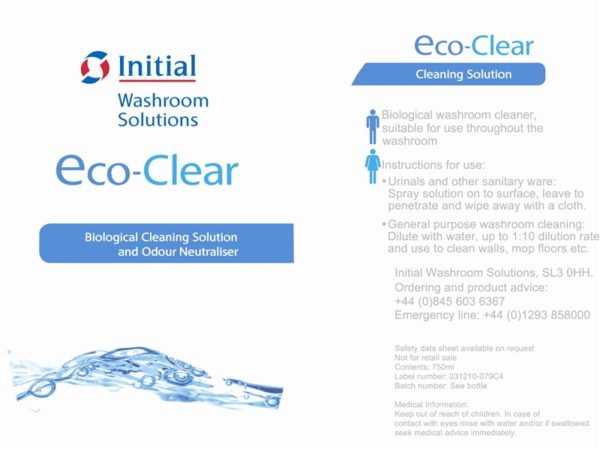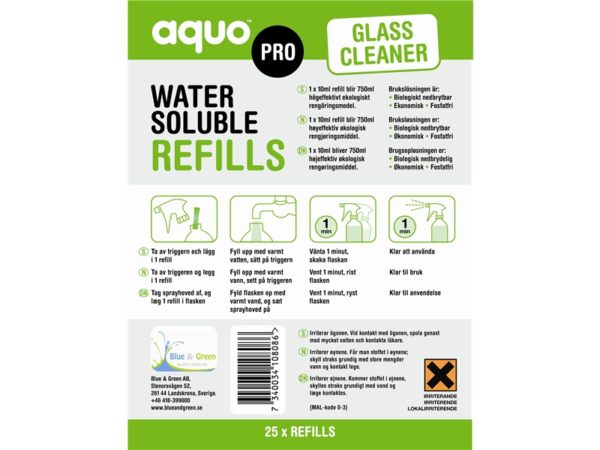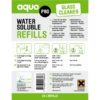Ecological Labels
Home / Full Product Range / Chemical Labels / Ecological Labels
Printed bespoke to your requirements, ecological labels can be printed on a range of face papers and adhesives. Please contact us for free samples or a printed proof from your artwork.
Pesticides and Insecticide Labels FAQs
Pesticides:
Pesticides are chemical or biological substances used to prevent, destroy, repel, or mitigate any pest ranging from insects, animals, and weeds to microorganisms such as fungi, moulds, bacteria, and viruses. Pests can be harmful to crops, animals, and even humans, and pesticides play a crucial role in controlling these pests to ensure food security, prevent diseases, and maintain ecological balance.
Insecticides:
Insecticides are a subset of pesticides specifically formulated to target and kill insects. They can be used in agriculture to protect crops from insect pests, in public health to control vectors of diseases (like mosquitoes), and in homes and gardens to manage insect infestations.
Here’s a breakdown of the information typically required on pesticide and insecticide labels in the UK:
Product Name: The commercial name of the product.
Registration Number: A unique identifier given when the product is approved for use in the UK.
Active Ingredient(s): Lists the chemical or biological agents that act against the pests. This section will include the concentration (usually in percentages or grams per litre).
Net Contents: The amount of product in the container, typically given in litres or kilograms.
Usage Instructions: Detailed guidelines on how to use the product, including dilution rates, application methods, and frequency.
Target Pests: Specifies which pests the product is designed to control.
Safety Precautions: Important for the user’s safety. This section includes:
Personal protective equipment (PPE) recommendations.
First aid instructions in case of exposure.
Warnings about potential hazards, e.g., flammability or environmental risks.
Storage and Disposal Instructions: Guidelines on how to store the product safely and how to dispose of any unused product or empty containers.
Withholding Period: For agricultural products, this indicates the time that must elapse between the last application and harvest to ensure residues have degraded to safe levels.
Environmental Precautions: Information on potential environmental hazards and guidelines to prevent contamination of water sources, harm to beneficial insects, or other ecological concerns.
Batch Number and Expiry Date: Helps in tracking and ensures the product is used within its effective period.
Manufacturer’s Details: Information about the company that produced the product, including contact details for further inquiries or in case of emergencies.
Restricted Use: If the product is only to be used by professionals or in specific situations, this will be clearly stated.
Compatibility: Information on whether the product can be mixed with other substances or if there are any known adverse reactions with other products.
Resistance Management: Guidelines to prevent the development of resistance in target pests, especially important for insecticides.
In the UK, the Chemicals Regulation Division (CRD) of the Health and Safety Executive (HSE) is responsible for the regulation of pesticides. Once approved in the UK by CRD, the product is given a Ministry of Agriculture, Fisheries and Food (MAFF) number or a registration number.
Here are the 8 steps the CRD uses to ensure the accuracy and correctness of information on pesticide labels:
Approval Process: Before a pesticide can be sold or used in the UK, it must undergo a rigorous approval process. This involves a thorough assessment of the active substances in the product, as well as the product itself.
Data Submission: Manufacturers or applicants must submit a comprehensive set of data about the pesticide. This data includes information on the product’s efficacy, its potential effects on human health, its impact on the environment, and its behaviour in the environment.
Risk Assessment: The CRD conducts a detailed risk assessment based on the submitted data. This assessment evaluates the potential risks to humans (operators, workers, consumers, and bystanders) and the environment (including water, soil, air, plants, and animals).
Label Review: Once the risk assessment is complete and if the product is deemed acceptable, the CRD reviews the proposed label to ensure it provides clear and accurate information. The label must include details on safe use, storage, disposal, and any necessary precautions.
Post-Approval Monitoring: Even after a pesticide is approved and on the market, the CRD continues to monitor its use and any potential adverse effects. If new concerns arise or if there’s evidence of misuse, the CRD can take action, which might include label amendments, additional restrictions, or even product withdrawal.
Regular Re-evaluation: Pesticides are not approved indefinitely. They are subject to periodic re-evaluation to consider new scientific data and ensure they continue to meet the current safety standards.
Enforcement: The CRD, along with other agencies and local authorities, has the power to enforce regulations. This includes inspecting retailers, distributors, and users to ensure products are correctly labelled and used as intended. Non-compliance can result in penalties, including fines and prosecution.
Public Involvement: The CRD is committed to transparency and public involvement. Stakeholders, including the public, can access information about pesticide approvals and provide input during consultations on potential regulatory decisions.
An EPA registration number is a unique identifier assigned by the U.S. Environmental Protection Agency (EPA) to pesticide products that have been registered and approved for use in the United States. This does not apply to pesticides sold in the UK where they are regulated by the CRD. In the UK the CRD issue MAFF numbers.
Printed bespoke to your requirements, ecological labels can be printed on a range of face papers and adhesives. Please contact us for free samples or a printed proof from your artwork.
Pesticides and Insecticide Labels FAQs
Pesticides:
Pesticides are chemical or biological substances used to prevent, destroy, repel, or mitigate any pest ranging from insects, animals, and weeds to microorganisms such as fungi, moulds, bacteria, and viruses. Pests can be harmful to crops, animals, and even humans, and pesticides play a crucial role in controlling these pests to ensure food security, prevent diseases, and maintain ecological balance.
Insecticides:
Insecticides are a subset of pesticides specifically formulated to target and kill insects. They can be used in agriculture to protect crops from insect pests, in public health to control vectors of diseases (like mosquitoes), and in homes and gardens to manage insect infestations.
Here’s a breakdown of the information typically required on pesticide and insecticide labels in the UK:
Product Name: The commercial name of the product.
Registration Number: A unique identifier given when the product is approved for use in the UK.
Active Ingredient(s): Lists the chemical or biological agents that act against the pests. This section will include the concentration (usually in percentages or grams per litre).
Net Contents: The amount of product in the container, typically given in litres or kilograms.
Usage Instructions: Detailed guidelines on how to use the product, including dilution rates, application methods, and frequency.
Target Pests: Specifies which pests the product is designed to control.
Safety Precautions: Important for the user’s safety. This section includes:
Personal protective equipment (PPE) recommendations.
First aid instructions in case of exposure.
Warnings about potential hazards, e.g., flammability or environmental risks.
Storage and Disposal Instructions: Guidelines on how to store the product safely and how to dispose of any unused product or empty containers.
Withholding Period: For agricultural products, this indicates the time that must elapse between the last application and harvest to ensure residues have degraded to safe levels.
Environmental Precautions: Information on potential environmental hazards and guidelines to prevent contamination of water sources, harm to beneficial insects, or other ecological concerns.
Batch Number and Expiry Date: Helps in tracking and ensures the product is used within its effective period.
Manufacturer’s Details: Information about the company that produced the product, including contact details for further inquiries or in case of emergencies.
Restricted Use: If the product is only to be used by professionals or in specific situations, this will be clearly stated.
Compatibility: Information on whether the product can be mixed with other substances or if there are any known adverse reactions with other products.
Resistance Management: Guidelines to prevent the development of resistance in target pests, especially important for insecticides.
In the UK, the Chemicals Regulation Division (CRD) of the Health and Safety Executive (HSE) is responsible for the regulation of pesticides. Once approved in the UK by CRD, the product is given a Ministry of Agriculture, Fisheries and Food (MAFF) number or a registration number.
Here are the 8 steps the CRD uses to ensure the accuracy and correctness of information on pesticide labels:
Approval Process: Before a pesticide can be sold or used in the UK, it must undergo a rigorous approval process. This involves a thorough assessment of the active substances in the product, as well as the product itself.
Data Submission: Manufacturers or applicants must submit a comprehensive set of data about the pesticide. This data includes information on the product’s efficacy, its potential effects on human health, its impact on the environment, and its behaviour in the environment.
Risk Assessment: The CRD conducts a detailed risk assessment based on the submitted data. This assessment evaluates the potential risks to humans (operators, workers, consumers, and bystanders) and the environment (including water, soil, air, plants, and animals).
Label Review: Once the risk assessment is complete and if the product is deemed acceptable, the CRD reviews the proposed label to ensure it provides clear and accurate information. The label must include details on safe use, storage, disposal, and any necessary precautions.
Post-Approval Monitoring: Even after a pesticide is approved and on the market, the CRD continues to monitor its use and any potential adverse effects. If new concerns arise or if there’s evidence of misuse, the CRD can take action, which might include label amendments, additional restrictions, or even product withdrawal.
Regular Re-evaluation: Pesticides are not approved indefinitely. They are subject to periodic re-evaluation to consider new scientific data and ensure they continue to meet the current safety standards.
Enforcement: The CRD, along with other agencies and local authorities, has the power to enforce regulations. This includes inspecting retailers, distributors, and users to ensure products are correctly labelled and used as intended. Non-compliance can result in penalties, including fines and prosecution.
Public Involvement: The CRD is committed to transparency and public involvement. Stakeholders, including the public, can access information about pesticide approvals and provide input during consultations on potential regulatory decisions.
An EPA registration number is a unique identifier assigned by the U.S. Environmental Protection Agency (EPA) to pesticide products that have been registered and approved for use in the United States. This does not apply to pesticides sold in the UK where they are regulated by the CRD. In the UK the CRD issue MAFF numbers.




















